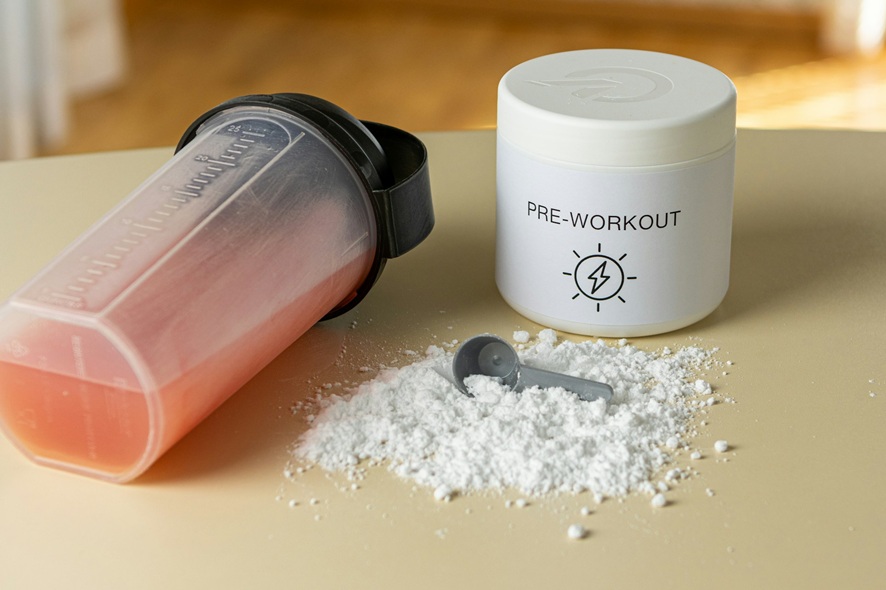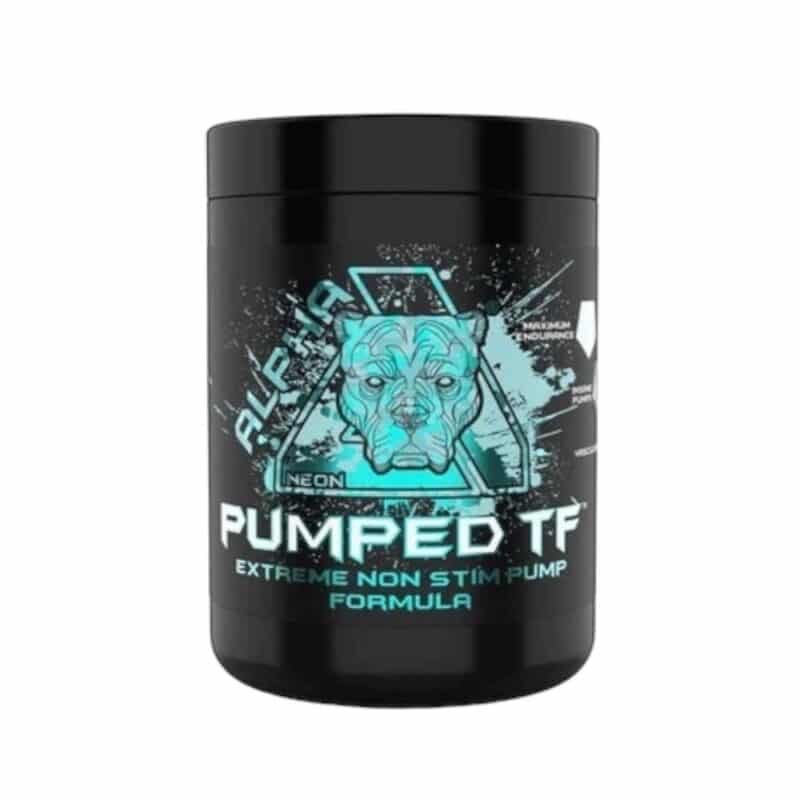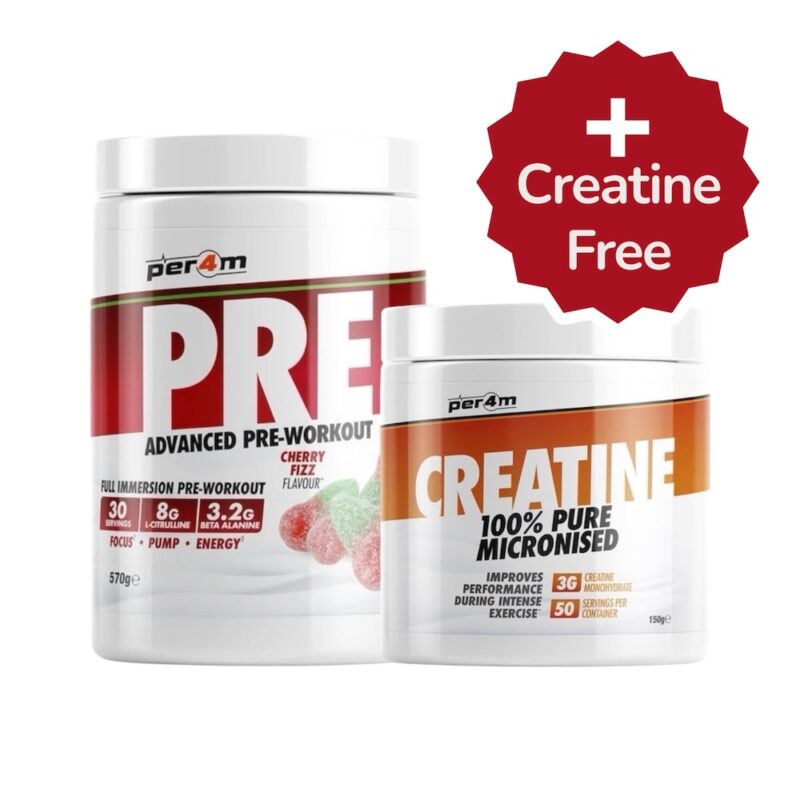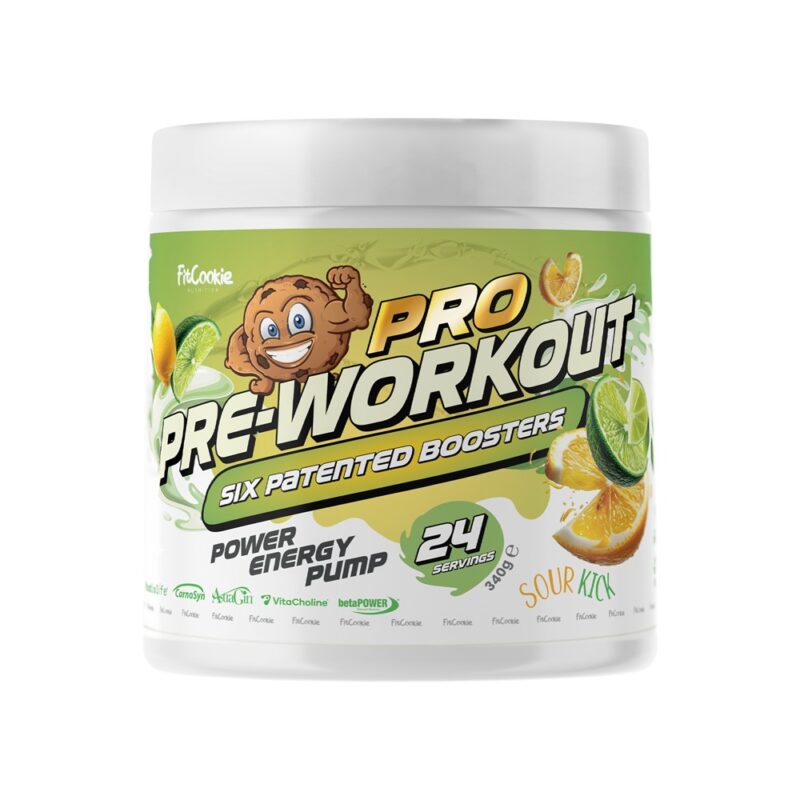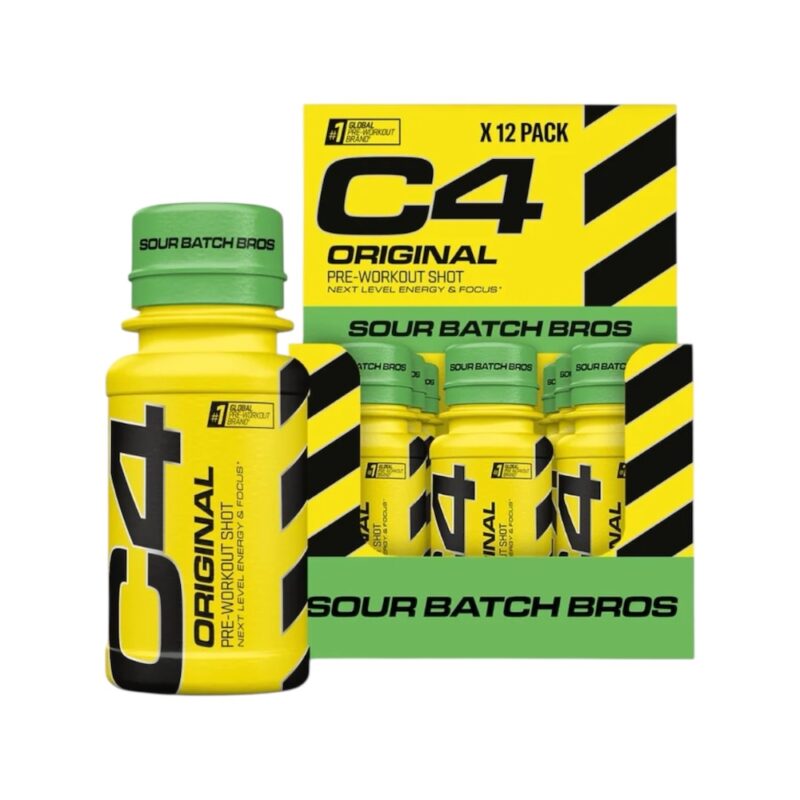If your pre‑workout has ever made you feel like a superhero for 20 minutes and a sleepy hedgehog thereafter, this guide is for you. In this clear, no‑nonsense overview of Pro Pre‑Workout: Ingredients, Effects, and How It Really Boosts Your Training, we’ll cut through hype to highlight evidence‑backed actives, smart dosing, and goal‑matched formulas, then show you exactly when to take them, what to stack (and what to skip), and how to fuel so the benefits actually show up in your sets, intervals, and recovery. You’ll get practical tools to test results over two weeks, troubleshoot side‑effects safely, and how to use it like a pro. Read on, apply what fits your training, and feel free to share your experiences, questions, and favourite combos so we can all lift, sprint, and recover a little better together.
- Evidence-Based Pre-Workout Formulas: A Look Inside FitCookie Pro Pre-Workout
- Timing, Stacking, and Nutrition That Amplify Effects
- Performance Changes You’ll Notice and How to Measure Them
- Side‑Effects, Safety Checks, and Smart Cycling
- Using Your Pre-Workout: Practical Tips for the Best Experience
Evidence-Based Pre-Workout Formulas: A Look Inside FitCookie Pro Pre-Workout
Pre-workout supplements often promise strength, focus, and endless stamina — but what actually makes them work? To cut through the noise, let’s look at the science behind a well-formulated product. Using FitCookie Pro Pre-Workout as an example, we’ll break down each ingredient, its effective dose, and what research says about its real-world impact.
Below you’ll find a transparent ingredient reference, similar to a checklist you can use to evaluate any pre-workout formula on the shelf.
Active Ingredients and Functional Overview
| Active Ingredient | Per Serving (17 g) | Acute or Needs Loading | Primary Effect | Practical Note |
|---|---|---|---|---|
| Citrulline Malate (of which L-Citrulline) | 6000 mg (4080 mg) | Acute | Pumps / Blood Flow | Increases nitric oxide levels to enhance muscle pumps, blood flow, and endurance. |
| CARNOSYN® Beta-Alanine | 3200 mg | Loaded | High-Rep Capacity / Endurance | Builds up with consistent use; delays fatigue and supports sustained performance. |
| BETAPOWER® Natural Betaine (TMG) | 2500 mg | Acute + Chronic | Power / Strength Output | Shown to improve endurance and work capacity; may aid heart health via homocysteine regulation. |
| VITACHOLINE® Choline Bitartrate | 1600 mg | Acute | Mental Focus / Cognition | Supports focus and mental clarity; contributes to metabolism and nervous system health. |
| N-Acetyl-L-Tyrosine | 1000 mg | Acute | Stress Resilience / Focus | Precursor for dopamine and norepinephrine — key neurotransmitters for alertness and motivation. |
| RHODIOLIFE® Rhodiola Rosea Extract (of which Rosavins) | 200 mg (6 mg) | Acute + Chronic | Adaptogenic Support | Reduces stress and perceived fatigue; supports endurance and cognitive performance. |
| COFFEINE® Natural Caffeine (from Coffee Beans) | 200 mg | Acute | Energy / Focus | Enhances alertness and perceived effort; natural source for smoother stimulation. |
| ASTRAGIN® (Astragalus & Panax Notoginseng Extract) | 50 mg | Acute + Chronic | Nutrient Absorption / Gut Health | Supports nutrient uptake and gut integrity, improving ingredient bioavailability. |
| Vitamin B12 (Methylcobalamin) | 25 µg (1000 % NRV*) | Chronic | Energy Metabolism / Recovery | Contributes to normal energy production and red blood cell formation. |
*NRV – Nutrient Reference Value
Timing, Stacking, and Nutrition That Amplify Effects
Pre‑workout timing makes or breaks performance. Keep the window tight and match it to the meal size: 60–90 min with a big carb meal, 30–45 min with a light snack, and 15–25 min fasted or liquid. For fasted training, pull caffeine down to 1–1.5 mg/kg and add 300–700 mg sodium in water to stabilise blood pressure and enhance plasma volume. Long lifts? Pair a scoop with 30–60 g easy carbs plus 15–25 g protein when sessions run beyond an hour. Keep stacks clean and proven: creatine 3–5 g daily any time, beta‑alanine 3.2–6.4 g/day split to avoid tingles, and dietary nitrates (beetroot) 90–150 min pre hard endurance work. Late‑day sessions call for non‑stim formulas; set a hard caffeine cut‑off at ~8 hours pre‑bed to protect sleep and recovery.
Scenario | Timing | What to Take | Why it Works |
|---|---|---|---|
With a big carb meal | 60–90 min pre‑training | Standard pre‑workout; water; meal with 80–120 g carbs | Allows gastric emptying and peak caffeine/arginine uptake without GI drag |
With a light snack | 30–45 min pre‑training | Pre‑workout + banana + whey + pinch of salt in water | Quick glucose and amino acids; sodium supports hydration and pump |
Fasted or liquid only | 15–25 min pre‑training | Lower‑dose caffeine (1–1.5 mg/kg) + 300–700 mg sodium in water | Fast absorption; avoids jitters and dizziness when glycogen is low |
Strength session >60 min | Top up during warm‑up | 30–60 g carbs + 15–25 g protein (e.g., banana + whey) | Sustains output, reduces perceived exertion, supports recovery |
Endurance hard day | 90–150 min pre | Nitrates (beetroot shot 400–800 mg NO3‑) | Improves blood flow and economy at race‑pace intensities |
Late evening training | After caffeine cut‑off | Non‑stim pre + electrolytes; creatine as normal | Protects sleep while keeping pump, focus, and hydration support |
Pre‑Workout Timing and Nutrition: Real‑World Examples
Keep the stack boring and effective: creatine daily (habit‑stack with breakfast), beta‑alanine split doses across the day, and plug in nitrates only when endurance truly matters. Two quick meals that never miss: 60–90 min out go for bagel + honey + Greek yoghurt; 30–45 min out grab banana + whey + a pinch of salt in water. Nail those windows, respect the caffeine ceiling, and performance jumps without the crash.
Performance Changes You’ll Notice and How to Measure Them
Ready to see if your pre workout supplement actually does anything beyond a nice tingle? Run a blunt 2‑week A/B check:
- Week 1 baseline (no formula),
- Week 2 with your chosen pre workout.
Use the same sessions, same time of day, similar sleep and food. Keep a 5‑line scorecard so it’s unmissable: volume load (sets × reps × load) on two key lifts, best set reps at a fixed load (say 75% 1RM), RPE on last working set, conditioning output (repeat sprint average watts or 2 km row time), and heart rate recovery (drop in bpm from end‑set to 1 min). Then average across 2–3 sessions to kill noise. Example lines, clean and merciless:
- Bench: 3×5 @80 kg → 3×6 @80 kg (RPE 8 → 7.5).
- Sprints: 6×30 s, avg 520 W → 548 W (+5.4%). HRR: 164→124 bpm vs 166→118 bpm (+6 bpm).
If the trend is consistent, you’ve got a real training effect, not placebo sparkle.
Side‑Effects, Safety Checks, and Smart Cycling
Safety first isn’t a buzzword here—it’s the difference between a clean, focused session and a crash‑and‑burn disaster. If pregnant, hypertensive, on SSRIs or other stimulants, or under 18, skip it or get medical clearance. Keep total caffeine under 400 mg/day and watch hidden sources in coffee, sodas, and fat burners. Common hiccups have simple fixes:
- Tingles from beta‑alanine? Split doses or lower the serving.
- Jitters from stimulants? Drop to 1 mg/kg caffeine and pair with L‑theanine (100–200 mg).
- GI upset from nitrates or citrulline? Take with more water and a smaller dose.
- Niacin flush? Use a non‑flushing form (inositol hexanicotinate) or cut the dose. For hot sessions or heavy sweat, add 300–700 mg sodium and sip 500–750 ml fluid pre‑session.
- Late training? Stick to non‑stim blends and protect your sleep window.
Issue | Likely Culprit | Typical Dose Range | Fix That Actually Works | Real‑World Example |
|---|---|---|---|---|
Jitters / Anxiety | Caffeine | 150–300 mg per serving | Cut to 1 mg/kg; add 100–200 mg L‑theanine | 80 kg lifter drops from 250 mg to 80 mg + 150 mg theanine; HR steadies |
Tingles | Beta‑alanine | 2–3.2 g per serving | Split into 800 mg doses or reduce total to 1.6–2 g | 2 g pre + 1 g post; tingles fade, performance intact |
GI Upset | Citrulline / Nitrates | 6–8 g citrulline; 300–400 mg nitrate | Take with 300–500 ml water; smaller dose and build tolerance | Start at 4 g citrulline for a week; no cramping, pumps still solid |
Flush / Heat | Niacin | 20–50 mg | Switch to non‑flushing form or reduce to 10–15 mg | Brand swap to inositol hexanicotinate; no face burn |
Sleep Disruption | Late stimulants | Any dose after 6–8 hours pre‑bed | Use non‑stim (citrulline, betaine, electrolytes) | Evening lifter switches to stim‑free; deep sleep rebounds |
Cramping / Fatigue | Low sodium / fluids | — | Add 300–700 mg sodium; drink 500–750 ml pre | Hot‑gym day: 500 ml water + 1/4 tsp salt; no mid‑set cramps |
Run a smart cycling plan to keep sensitivity sharp and crashes off the table.
- Weeks 1–8: use on training days only.
- Week 9: halve caffeine while keeping the pumps (e.g., citrulline, betaine, electrolytes).
- Week 10: go non‑stim only. That two‑step taper avoids the classic mood dip and preserves performance.
Practical setup: heavy lower day—1 mg/kg caffeine + 6 g L‑citrulline + 2 g beta‑alanine + 300 mg sodium; deload or late session—drop stimulants, keep citrulline and electrolytes. Clean inputs, clean output—simple as that.
Using Your Pre-Workout: Practical Tips for the Best Experience
Getting the most out of a pre-workout isn’t just about what’s inside the tub — it’s also about how you use it. For optimal effects, take your serving 20–30 minutes before training, giving your body enough time to absorb the active ingredients. Start with half a scoop if you’re new to the formula, especially when it contains caffeine, and gradually adjust based on your body weight and session intensity.
To prepare, mix the powder with 300–600 ml of cold water, stirring or shaking until fully dissolved. If small clumps form, simply break them up with a spoon and shake again — the product remains perfectly safe to use. Taste can be adjusted with a little extra water if the flavour feels too strong.
Storage is important: keep the tub tightly sealed in a cool, dry place to prevent moisture from causing clumping. Even if minor clumps form over time, breaking them up before use ensures a smooth mix.
A few additional practical pointers:
Rotate stimulant-based pre-workouts periodically to avoid tolerance build-up.
On lighter training or rest days, consider non-stimulant alternatives or focus on hydration and recovery.
Always follow the label instructions for serving size, and avoid combining with other high-caffeine products.
Frequently Asked Questions
Can I combine a pre‑workout with my morning coffee without overdoing caffeine?
Yes, but total daily caffeine should stay under 400 mg. Check your pre‑workout’s per‑scoop caffeine and subtract that from your usual coffee intake; if close to the limit, choose a non‑stim or half‑scoop.
Do I need a pre‑workout if I already take creatine and eat carbs before training?
Not strictly. Creatine and carbs cover core performance needs; a pre‑workout can add acute benefits like focus (caffeine/theanine) and pumps/endurance (citrulline/nitrates) if you want an extra edge.
What should I feel from a good pre‑workout, and what’s just marketing hype?
Expect clearer focus, slightly higher power/rep capacity, better pumps, and steadier pacing. Ignore promises of instant fat loss, “test boosters”, or under‑dosed exotic botanicals.
How do I adjust doses if I’m smaller or very caffeine‑sensitive?
Start at half‑scoop and scale by body mass for stimulants (e.g., 1 mg/kg caffeine). Keep non‑stim actives near evidence ranges, but you can begin at the low end and titrate up based on response.
Are pump products without stimulants useful for evening sessions?
Yes. Non‑stim formulas with L‑citrulline, nitrates, taurine, and electrolytes support pumps, endurance, and hydration without disrupting sleep; add tyrosine or theanine for focus if needed.

